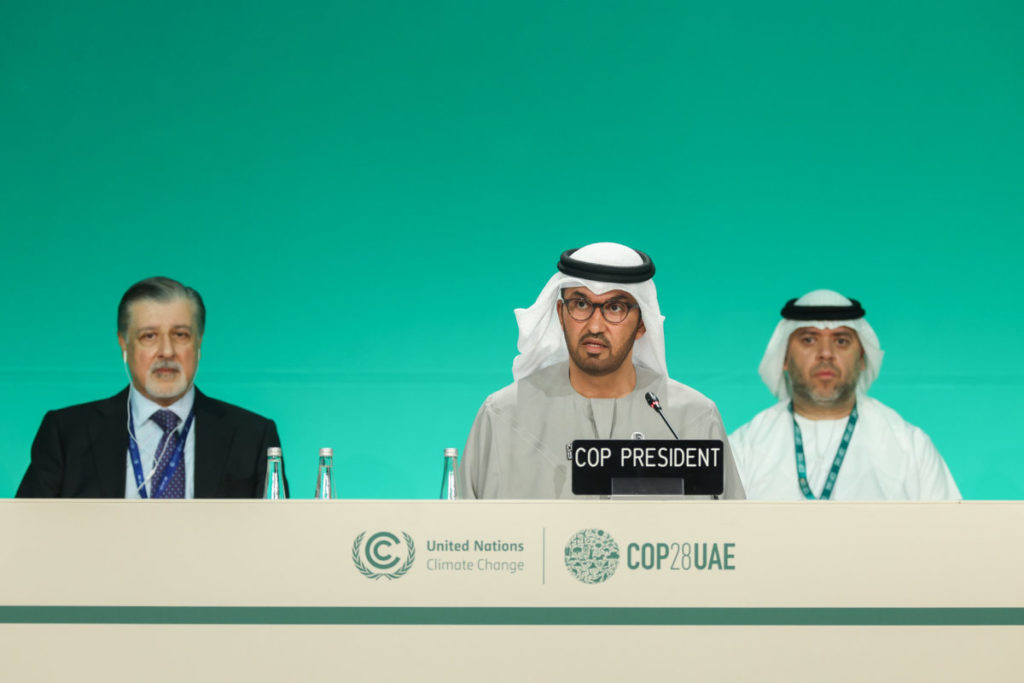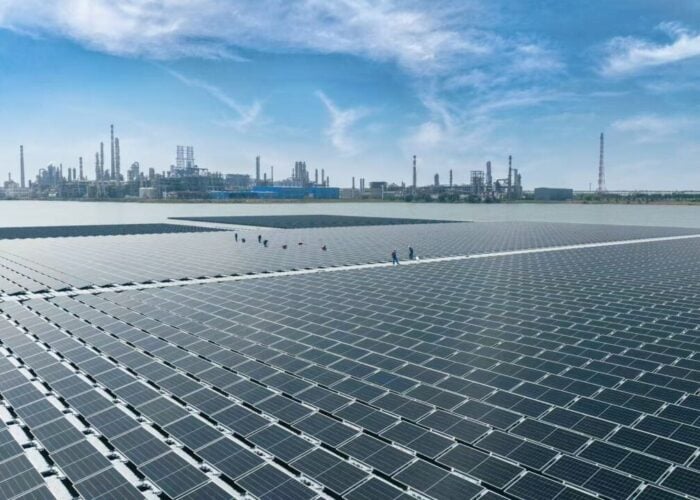
In the final days of the year, PV Tech is looking back at the solar sector in 2023. In the fourth quarter of the year, the world turned its attention to the COP28 climate conference in Dubai, and while many of the world’s leaders made ambitious plans for their countries’ respective solar sectors, questions remain as to the sincerity of these zero carbon commitments. Elsewhere, 2023 saw a number of new milestones reached for both solar project installation, with Europe and China two regions set to install record-breaking volumes of capacity by the end of the year, and technology innovation, with claims of record-breaking heterojunction technology (HJT) and perovskite developments.
COP28 tempers expectations for the clean energy transition
The COP28 conference dominated headlines in the fourth quarter of the year, with the event’s leaders making stark warnings about the future of the Earth’s climate before the conference began in November. At the end of October, the COP28 Presidency, the International Renewable Energy Agency (IRENA) and the Global Renewables Alliance (GRA) published a report that found that the world would need to triple its renewable installations by the end of the decade in order to meet the world’s climate goals.
Unlock unlimited access for 12 whole months of distinctive global analysis
Photovoltaics International is now included.
- Regular insight and analysis of the industry’s biggest developments
- In-depth interviews with the industry’s leading figures
- Unlimited digital access to the PV Tech Power journal catalogue
- Unlimited digital access to the Photovoltaics International journal catalogue
- Access to more than 1,000 technical papers
- Discounts on Solar Media’s portfolio of events, in-person and virtual
While this is a lofty target, the report’s conclusion, that global solar end demand would need to reach 5.4TW by the end of 2030, encouraged those in the solar sector to emphasise the role of solar power at November and December’s conference. The world’s leaders agreed to a target of 11TW of renewable capacity deployment by the end of the decade, with solar to account for half of this figure.
The International Energy Agency (IEA) also published its latest World Energy Outlook report, which noted that solar manufacturing capacity would have to reach 1.2TW per year by 2030 to meet this target, and the work of individual countries – including North Macedonia, which aims to generate 1.7GW of new renewable capacity by the end of the decade – suggests individual governments are supportive of the broad infrastructure investments needed to reach these targets.
These goals drew some approval from the solar sector, with the Global Solar Council (GSC) noting that the conference “is an unequivocal signal that renewables are in, and fossil fuels are out”.
“What a momentous day,” added Máté Heisz, director of global affairs at SolarPower Europe, which also supported many of the agreements. “The specific inclusion of solar, wind and storage for the first time signifies the critical role renewables must play in delivering a clean, and just energy transition this decade.”
However, both GSC and SolarPower Europe criticised the agreements for leaving “too many backdoors” for governments to allow fossil fuels to remain important parts of their national energy mixes, most notably classifying natural gas as a “transitional fuel”, which could suggest that it deserves to feature as prominently as renewables, such as solar and wind, in a clean energy mix.
Record-breaking capacity installations in 2023
While the future of the energy transition is uncertain, following the conclusion of COP28, 2023 demonstrated a number of examples of unprecedented growth in the solar sector. Unsurprisingly, China dominated deployment additions in 2023, on track to install a massive 230GW of new deployment by the end of the year, considerably more than the 75GW of new deployment set to be added in Europe, and the 40GW of new capacity in the US pipeline.
The rate at which China is installing new renewable deployment is perhaps the most impressive, with Chinese developers more than doubling the country’s renewable deployment between 2016 and 2022. Figures from IRENA show that, as recently as 2014, Europe had installed more renewable deployment than China, and in 2021, the Chinese market became the first to crack the 1TW threshold.
Yet other markets posted impressive deployment addition performances in 2023, with Europe also on track to set a new record for annual deployment installations. European solar developers will add 56GW of new deployments by the end of the year, according to SolarPower Europe, with installed solar capacity set to leap by 40% from 2022 to 2023.
Much of this transition will also benefit from supportive legislation, with the EU passing a number of new laws to aid in the installation and distribution of power generated from clean energy sources. In November, the European Commission published an action plan to accelerate the rollout of electricity grids, and improve the efficiency of the power grids, within the EU’s borders, helping to deliver the improvements in infrastructure necessary for a radical realignment of the European energy mix.
In December, the European Council and European Parliament brought an end to nine months of negotiations regarding the EU’s electricity market design, with new agreements to fix renewable energy prices on the continent. The solar sector is hopeful that this security will help address many of the challenges faced by the European manufacturing industry in particular, where modules produced elsewhere in the world are often cheaper for European developers to import, making many European manufacturers redundant, or at least making their operations financially unviable.
In other markets, the capacity of the Indian renewables sector is expected to increase to 170GW by March 2025, and a newfound appetite for solar power could help tackle a collapse in solar PV cell and module prices that dramatically slowed the rate of construction of new solar projects in India in Q2 the year. Elsewhere, South Africa’s latest renewables investment round is calling for a record 1.8GW of new solar capacity, an encouraging development for a country historically reliant on coal-fired power plants to meet its power demand.
China leads technology innovations
Many of these new installations have been underpinned by parallel expenditure in research and development, and the constant investment in more efficient operations will be of benefit to the sector in the long-term.
In November, LONGi developed a crystalline silicon-perovskite tandem solar cell with a power conversion efficiency of 33.9%, the highest on record, and one verified by the US National Renewable Energy Laboratory (NREL). The company’s research follows other investments in perovskite cells, which saw academics at the King Abdullah University of Science and Technology in Saudi Arabia break the 33.2% and 33.7% conversion efficiency threshold, and LONGi’s latest cell caps off a year of consistent innovation in perovskite cells.
A week later, Huasun developed a new monocrystalline HJT cell with a conversion efficiency of 25.8%, and deployed the cell in its latest Himalaya series of modules.
However, both of these companies are based in China, and while their innovations are of benefit for the solar sector in general, this will do little to address the imbalances in the global solar sector throughout the year.
At the end of the year, research firm Rystad Energy reported that countries beyond China will need to invest US$700 billion into mining and manufacturing alone to eliminate their reliance on Chinese-made components for their countries’ respective solar sectors, and investments in decentralising the solar supply chain will be important to track as the calendar turns over to 2024.







